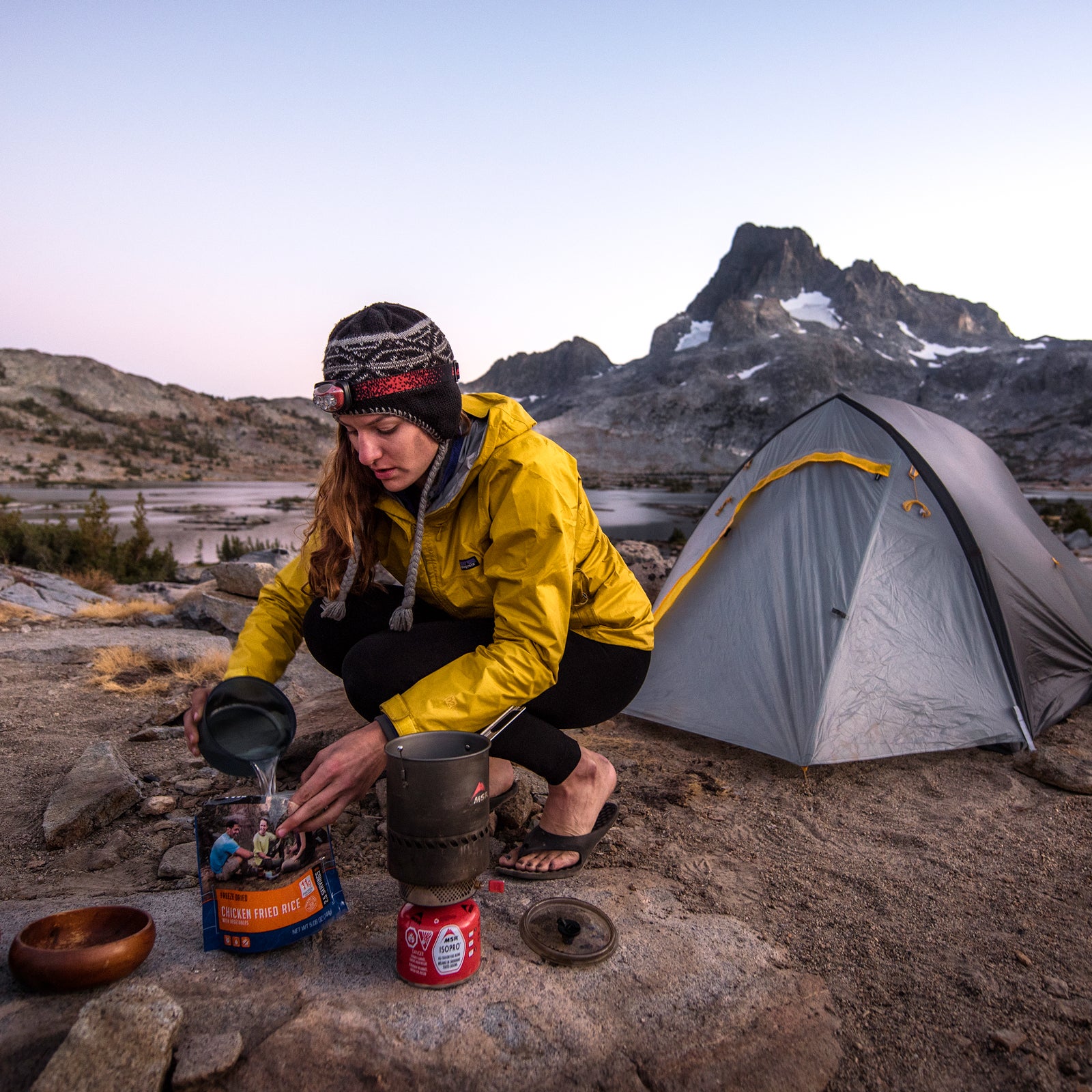In the beginning, there were cans: very heavy cans. “This was before my time—before I was even born,” says Soraya Smith. “The Girls Scouts were putting cans of cans of beans, cans of tuna, cans of food into their backpacks when they would do treks for hiking.” Smith, a graduate of the Culinary School of the Rockies, is an owner, founder, and head of recipe development for American Outdoor Products, the parent company of . She continues the mission that began in the early ‘50s, when Dri-Lite Foods, the predecessor of American Outdoor Products, was launched by Anne Benedict, a Girl Scout Troop Leader who had started dehydrating foods in her garage: to make the most packable, light, and delicious freeze-dried food for backpackers.
American Outdoor Products has spent the past five decades tracking the changing moods of the food world. On any given workday, she can select from thousands of different freeze-dried ingredients at her disposal: vegetables, proteins, herbs, spices, powdered dairy, powdered stock. “We have a process internally, where sales and marketing will identify a hole in our line,” Smith says. “Maybe we need more Mexican entrees. Maybe we need more breakfasts. What’s the newest, latest, greatest ingredient that everyone’s dying to use out there?”
Creating a dish from ingredients that have been dried is like working backward, says Paul Lightfoot, General Manager of . The brand’s head of food development, Erika Thornton, often works with a team of food scientists in a process that is the opposite of conventional recipe creation, where the smells and tastes of ingredients, combined with the sensations of heat in the kitchen, yield a result. The team, for instance, might be interested in creating a chili: they know what they want the end result to taste like, but they have to troubleshoot which ingredients to use, what volume of ingredients to use, and how much hydration a recipe requires. The brand also highlights so-called environmental hero products, like carbon-neutral lentils and kernza. The process of creating recipes, then, is a matrix that depends on everything from how a product is grown to how it comes together in a commercial kitchen.
For Smith, although the process isn’t exactly like conventional cooking, it does bear some similarities. She first starts with the flavors, taste memories, or dish ideas that she knows—perhaps that’s a food with which she’s familiar from her home kitchen, or a recipe that she’s made in the test kitchen.“I taste everything,” she says of the freeze-dried products. “I taste it dry, because I want to see what it does when you taste it and rehydrate in your mouth, and then I taste it after having added water.” Smith has been creating recipes for Backpacker’s Pantry since 2010, and has, she says, a good sense of how flavors—and freeze-dried ingredients, in particular—will mesh. “I can pretty much understand how an ingredient will rehydrate when you add water back into it, because, through the freeze-drying process, that’s literally the only thing that you have done, is take the water out. The cellular structure is there, the color is there, the flavor is there.”
The recipe is built on the scale, with smaller ingredients like spices and sauces going in last. She then adds water, hydrates the dish, and tastes it, adjusting the amounts of different ingredients afterward for flavor. “I add the water to it and see, ok, was that too much water, was that not enough water to get everything hydrated as I intended? So my process is very personal and private,” she says.
While Patagonia Provisions’ line of outdoor-friendly foods includes chilis, hot cereals, and snack foods, Backpacker’s Pantry has a line of slightly more culinarily escapist foods, like Pad Thai (one of the company’s best-sellers, Smith says), fettuccine alfredo with chicken, Kathmandu curry, and chicken larb. Smith relies on “flavor bombs” that are heavy on spices in order to recreate classic dishes. “To me, because I’m trained in culinary, it was a huge hurdle to get over to understand how I could develop flavor without cooking,” she says. (Cooks often reference the chemical process known as the Maillard Reaction, whereby proteins turn brown in the presence of heat, achieving what we commonly recognize as brown, or “cooked,” flavors.) And yet, in a tiny packet, without the aid of a stove, somehow, Smith has developed comparable flavors.
Looking to the future, brands like Patagonia Provisions hope that backpacking food isn’t only restricted to the backcountry. “I doubt we’re going to eliminate convenience from our supply chain and the way our economy runs,” Paul Lightfoot says. “We’ve got to figure out a way to make the right foods that are good for the planet convenient enough. That’s part of what we’re trying to crack the code on here.”


